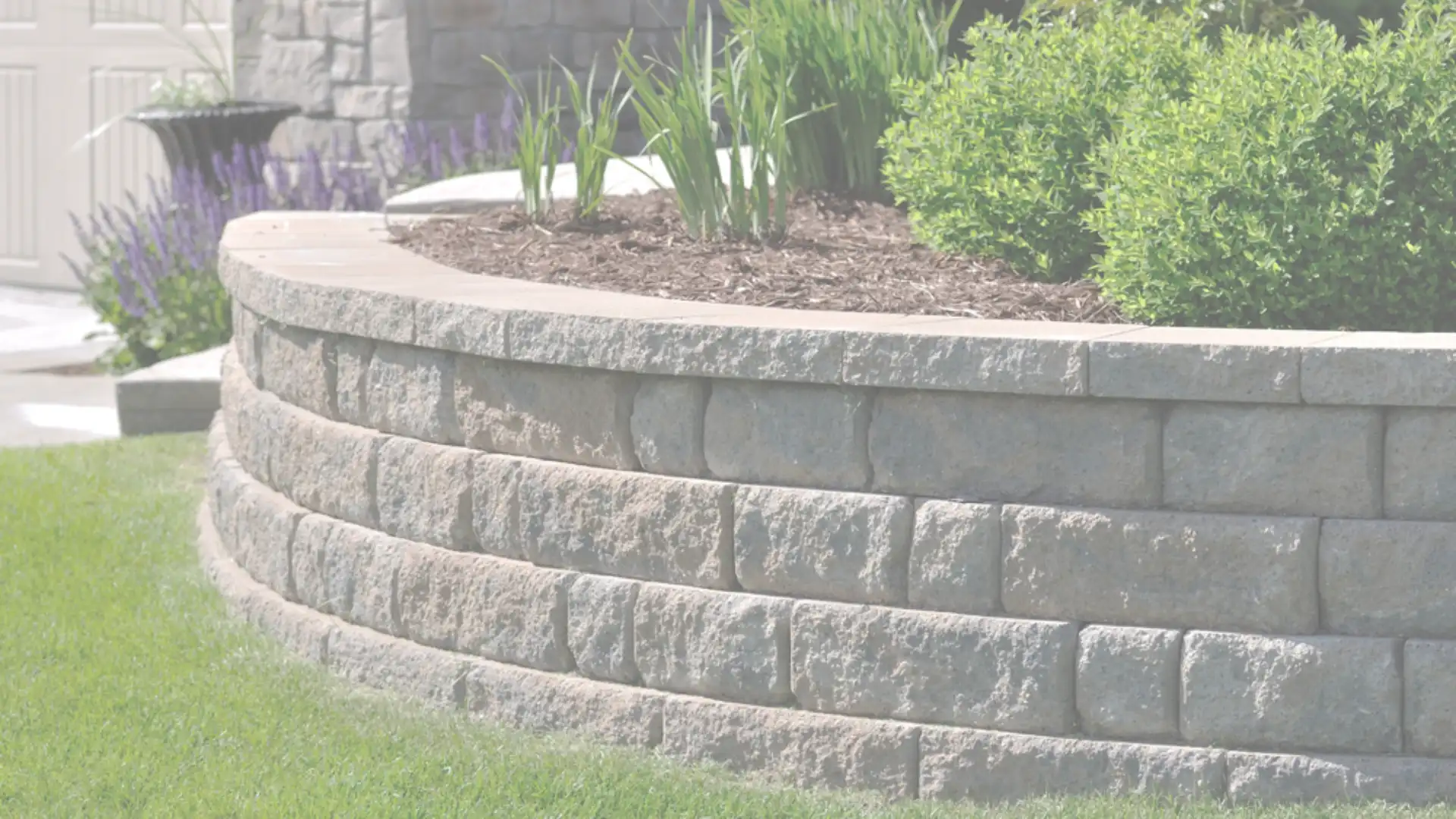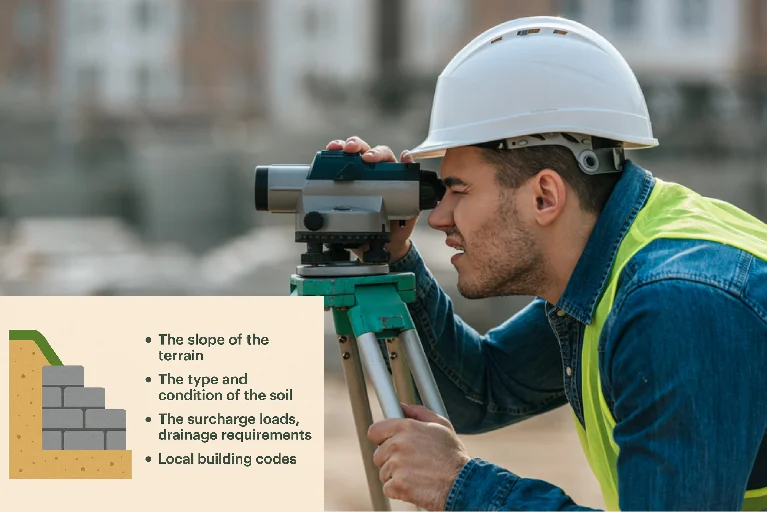Whether you’re securing a hillside in Rancho Cucamonga or enhancing a garden in Costa Mesa, partnering with expert retaining wall contractors ensures your wall is durable, efficient, and visually pleasing.
Retaining walls are more than functional structures—they’re essential for stabilizing landscapes, protecting your property, and elevating outdoor aesthetics.
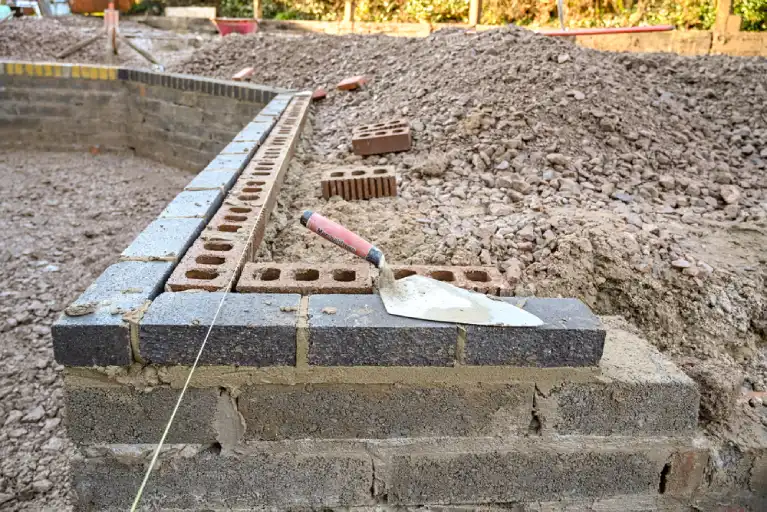
What is a Retaining Wall, and What is its Primary Function?
Retaining walls are rigid structures designed to hold soil to a slope that it wouldn’t naturally maintain.
Its main purpose is to counteract the sideways pressure exerted by soil when the ground level is altered beyond the natural slope at which the soil remains stable.
These walls help prevent soil erosion, improve structural integrity, and maximize usable land in residential and commercial landscapes across cities like San Diego, Irvine, and Fontana.
Common Materials Used in Orange County Retaining Walls
Several common materials are used in modern retaining wall construction:
- Concrete blocks
- Natural stone
- Brick
- Timber
- Mortar-set units
Each material brings a different level of strength, longevity, and aesthetic value, depending on the site and function.

Types of Retaining Walls: Structures Designed to Last
Choosing the right type of wall constructed depends on your property’s slope and soil conditions:
Gravity Retaining Walls
These structures are designed to resist pressure using their own weight.
Typically built with retaining wall blocks, they’re ideal for shorter walls in places like Santa Ana or Pomona.
Cantilevered Retaining Walls
Anchored to a footing and reinforced with steel, these walls are suited for taller applications in hilly regions such as Escondido or San Bernardino.
Block Retaining Wall
Popular in residential landscaping, block retaining walls use interlocking units and are perfect for properties in Orange, Garden Grove, or Mission Viejo.
Why Retaining Wall Construction Is Essential
Professional retaining wall construction enhances both safety and design. Benefits include:
- Helping prevent soil erosion during storms
- Creating usable land on slopes
- Increasing aesthetic value
- Supporting your home’s foundation
This makes wall construction critical in hillside areas such as Corona, Temecula, and Chula Vista.
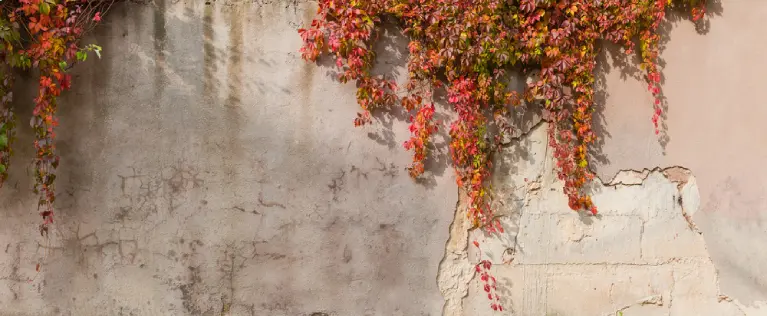
Retaining Wall Repair: When is it Time?
If your existing retaining wall is leaning, cracked, or separating from the soil, it may be time for retaining wall repair.
Home and business owners in Ontario, Fullerton, and Murrieta often encounter issues caused by ground shifts or poor drainage.
Retaining Wall Services May Include:
- Realignment of blocks or panels
- Reinforcing weakened structures
- Installing adequate drainage systems
- Replacing materials for improved structural integrity
When wall repair services are ignored, minor damage can turn into costly foundation problems.
New Retaining Wall vs. Repair
In cities like El Cajon and Oceanside, many homeowners weigh the cost of building a new retaining wall versus fixing an old one.
While wall repair can solve minor issues, unstable walls with deep cracks or bulging may need full replacement for safety and long-term performance.
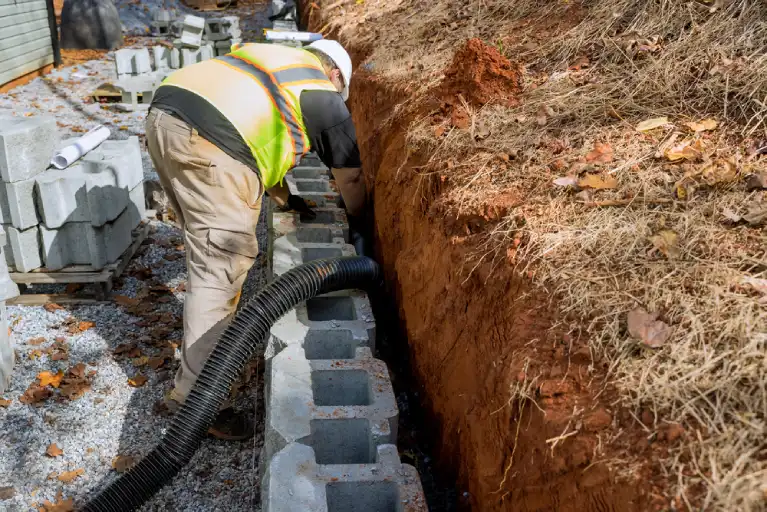
Importance of Proper Drainage
Installing proper drainage behind a retaining wall prevents water pressure from building up.
In places like Moreno Valley or Costa Mesa, French drains, gravel layers, and weep holes are standard features in professional retaining wall services.
How Much Does a Retaining Wall Cost?
Wall pricing depends on the wall’s size, design, materials, and terrain. Here’s a general idea:
- Concrete wall: $20–$40 per sq ft
- Decorative block wall: $30–$60 per sq ft
- Natural stone wall: $50–$100+ per sq ft
So, how much does a 100 ft retaining wall cost?
Expect a range of $2,000 to $10,000+, depending on your location (e.g., Anaheim, Long Beach, or Mission Viejo) and chosen materials.
Who Pays for a Retaining Wall in California?
Responsibility typically falls on the party benefiting from the wall.
In neighborhoods with shared slopes or property lines (like those in Rancho Cucamonga or Corona), costs may be split between property owners under California Civil Code §841.
Choosing the Right Retaining Wall Contractor South of Los Angeles
When hiring retaining wall contractors, homeowners in cities like Riverside, San Diego, or Huntington Beach should:
- Confirm licensing and insurance
- Ask for a portfolio of past wall construction work
- Read local reviews
- Get detailed estimates on materials and labor
- Ensure the company provides warranty-backed retaining wall repair or installation
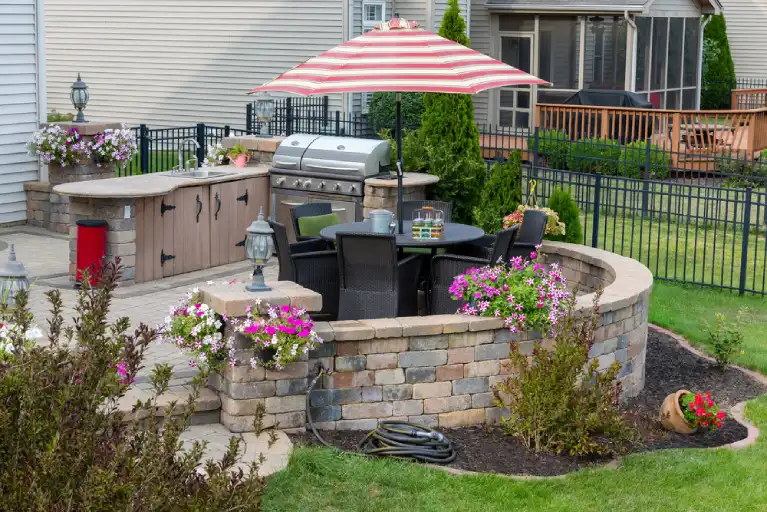
Integrating a Retaining Wall into Landscaping
Many clients in Costa Mesa, Irvine, or Oceanside choose a retaining wall to complement patios, gardens, or walkways.
With options for other materials like stucco, tile, and stone veneer, walls can be both functional and beautiful.
Final Thoughts
Whether you’re planning a new retaining wall, restoring an existing one, or need urgent wall repair, hiring skilled professionals across cities like San Diego, Garden Grove, and Murrieta ensures your structure is structurally sound, long-lasting, and adds significant aesthetic value to your home or business.

Frequently Asked Questions
What are the primary causes of retaining wall failure?
Failures often result from inadequate drainage, poor construction practices, improper backfilling, use of unsuitable materials, and insufficient structural design.
Hydrostatic pressure is a common cause when water accumulates behind the wall without proper drainage solutions.
Why is drainage important in retaining wall construction?
Drainage is essential to reduce hydrostatic pressure behind the wall, which can and will compromise its structural integrity.
Most retaining walls include weep holes, gravel backfill, or perforated pipe systems to facilitate proper water discharge.
Do retaining walls require permits or professional design?
Yes, in most municipalities, a permit is required for walls over a certain height (typically four feet).
Professional design is necessary to ensure compliance with local building codes and to guarantee structural stability, particularly for load-bearing or tiered walls.
Can you build retaining walls for aesthetic purposes in landscaping?
Absolutely. Retaining walls are commonly used to define garden spaces, create terraces, and enhance the visual appeal of a landscape.
Materials and finishes are often chosen to complement the architectural style of the surrounding environment.
How is the height of a retaining wall determined by engineers?
Engineers determine the height based on:
- The slope of the terrain
- The type and condition of the soil
- The surcharge loads, drainage requirements
- Local building codes
Generally, walls exceeding four feet require professional engineering analysis and permitting.
What is the expected lifespan of a retaining wall?
The lifespan varies depending on the construction material and environmental conditions.
Concrete and stone walls can last over 50 years, whereas timber walls may require replacement after 15 to 25 years.
Proper installation and basic maintenance significantly extend the wall’s durability.
How much does it cost to build a retaining wall?
The cost depends on several factors, including the wall’s height, length, materials used, accessibility of the site, and complexity of the design.
On average, costs may range from $20 to $50 per square foot, with high-end options exceeding this range.
Is any maintenance required for a retaining wall?
Yes. Routine inspections for signs of cracking, bulging, or water buildup are essential.
Maintenance may include cleaning weep holes, reinforcing joints, resealing concrete surfaces, and regrading soil or mulch that accumulates near the wall.
Can a retaining wall increase your property value?
Yes, retaining walls can increase a property’s value by improving the functionality of outdoor space, enhancing curb appeal, preventing erosion, and supporting landscape development.
Properly engineered and aesthetically designed walls are seen as assets in residential and commercial properties alike.

